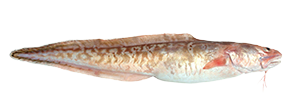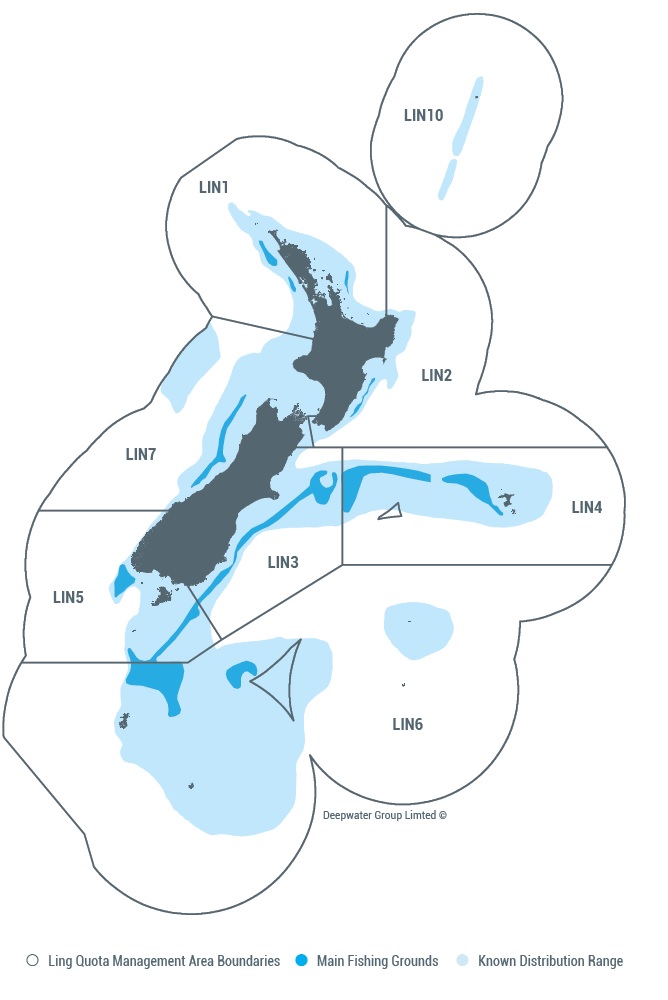Ling (LIN)
Ling fisheries are sustainably managed - click here.
LIN 3, LIN 4, LIN 5, LIN 6 & LIN 7 are certified sustainable under the Marine Stewardship Council's programme - click here.
Fisheries Standard. To view the supporting documents for the most recent MSC assessment of the ling trawl fisheries, click here, and for the ling longline fisheries, click here.
Ling is a primeval looking fish harvested by trawl and longline by both the inshore (from New Zealand’s coastline out to 12 nautical miles) and deepwater (from 12 to 200 nautical miles) fleet, mainly from New Zealand’s southern and sub-Antarctic waters. The ling fisheries overlap with the hoki and hake fisheries. As such, they are often considered and managed as a ‘complex’ due to the influence they have on each other and the additive effects that may result.
Since 2014, five ling longline and five ling trawl fisheries have been certified as meeting the very high seafood sustainability standards required by the Marine Stewardship Council. They are part of a select few global fisheries that have been MSC certified without conditions (or areas requiring improvement).
Quick Facts
- Trawl and longline fishery (depths of ~400-600m)
- Managed as five biological fish stocks: Chatham Rise (LIN 3 and 4), Sub-Antarctic (LIN 5 and part of 6), Bounty Plateau (part of LIN 6), west coast South Island (part of LIN 7), Cook Strait (parts of both LIN 2 and 7)
- SNZ Deepwater Council represents each stock and 90% of the total quota
- Live on the seabed and at times inhabit burrows, feeding on crustaceans and small fish
- Live to ~30 years
- Ten of New Zealand's ling fisheries are certified sustainable by the internationally recognised Marine Stewardship Council
- Firm white flesh that can be cooked in cubes or used for sashimi

Common Name
Ling
Scientific Name
Genypterus blacodes
Ministry Code
LIN

